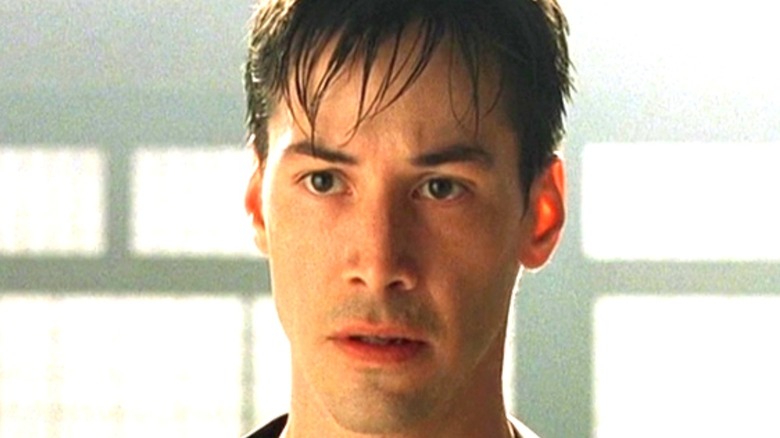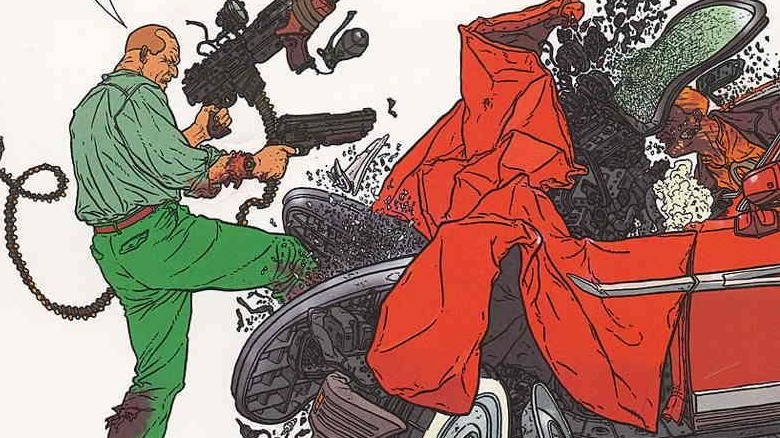What Only Comic Book Fans Know About The Matrix
When "The Matrix" opened in theaters in 1999, the Keanu Reeves action flick turned out to not just be a hit film but a phenomenon. Directed by the Wachowski siblings, "The Matrix" was a mind-blowing thriller that wowed audiences with its wire-based action choreography and "bullet time" effects. The ideas and style of the movie had already been prevalent in anime, Hong Kong action films, and dystopian cyberpunk, but these styles and ideas felt very new to American viewers.
"The Matrix" grossed $463 million at the box office (via Box Office Mojo) and spawned two sequels, comics, video games, an animated anthology film, and an upcoming fourth film by Lana Wachowski, "The Matrix Resurrections." Its impact on the culture became massive, with bullet-time scenes getting parodied in "Shrek" and the film's plot even spawning a new religion called Matrixism (via "Invented Religions").
Yet only comic book fans really know about the artist and graphic novel that helped inspire "The Matrix." Here's more about the series that fueled the Wachowski film.
The Wachowskis hired a comic book artist to create Matrix designs
A 1990 three-issue comic series written by Frank Miller, "Hard Boiled," centers on Carl Seitz, a working stiff who — like Neo (Keanu Reeves) in "The Matrix" — recognizes that reality is not what it seems. Soon Carl discovers the truth: He's not a normal insurance investigator, but a robot and corporate assassin trying to fight back against his programming. He also may be the only real hope of a rebel group that wants to break free of human control.
While "Hard Boiled" has obvious parallels to "The Matrix" in plot, a bigger influence was the book's striking, detailed art by Geof Darrow, also known for "The Big Guy and Rusty the Boy Robot." Darrow captured a mechanized dystopian future with such talent that the Wachowskis asked him to help create the "real world" of the machines (via Giant Freakin Robot). His haunting designs for "The Matrix" included the squid-like Sentinels and the human battery farm. Luckily, after the first film's success, he returned for the sequels and worked on the Wachowski film "Speed Racer," supplying audiences with even more incredible visual ideas.

